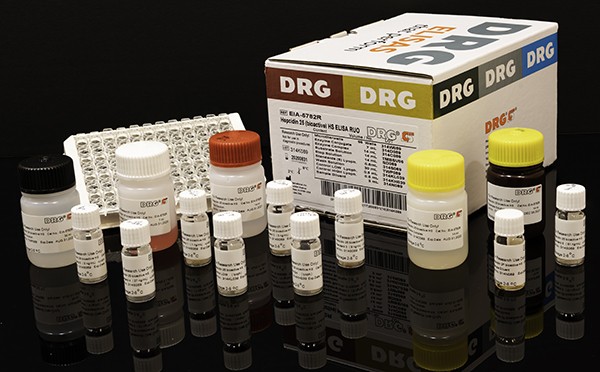Early postnatal hypoferremia in low birthweight and preterm babies: A prospective cohort study in hospital-delivered Gambian neonates
Abstract
Background
Neonates, particularly those born preterm (PTB) and with low birthweight (LBW), are especially susceptible to bacterial and fungal infections that cause an estimated 225,000 deaths annually. Iron is a vital nutrient for the most common organisms causing septicemia. Full-term babies elicit an immediate postnatal hypoferremia assumed to have evolved as an innate defense. We tested whether PTB and LBW babies are capable of the same response.
Methods
We conducted an observational study of 152 babies who were either PTB (born ≥32 to <37 weeks gestational age) and/or LBW (<2500 g) (PTB/LBW) and 278 term, normal-weight babies (FTB/NBW). Blood was sampled from the umbilical cord vein and artery, and matched venous blood samples were taken from all neonates between 6–24 h after delivery. We measured hematological, iron and inflammatory markers.
Laboratory analyses
A full hematology panel (using a Medonic M20M GP, Boule Diagnostics, Spanga, Sweden) and glucose-6-phosphate dehydrogenase deficiency test (R&D Diagnostics Limited, Papagos, Greece) were conducted on whole blood. Serum was separated and stored at −20 °C prior to analysis of ferritin, iron, unsaturated iron-binding capacity (UIBC), soluble transferrin receptor (sTfR), transferrin, c-reactive protein (CRP), haptoglobin and alpha-1-acid glycoprotein (AGP) using a fully automated biochemistry analyzer (Cobas Integra 400 plus, Roche Diagnostic, Switzerland). Transferrin saturation (TSAT) was calculated. Serum samples were assessed for hepcidin concentration by ELISA (hepcidin-25 (human) EIA Kit, DRG, USA) with a dynamic range of 0·135–81 ng/ml.
In order to ensure a consistent assessment of hemolysis in all serum samples, batches of samples were thawed before entering the biochemistry analyzer and visually scored by a single operator. A previously published specimen integrity chart for hemolysis was used as reference [18]. Samples were scored 0 (yellow 0 g/L) to 6 (dark red 8 g/L). Samples scoring ≥5 were removed from the analysis.
Findings
In both PTB/LBW and FTB/NBW babies, serum iron decreased 3-fold within 12 h of delivery compared to umbilical blood (7·5 ± 4·5 vs 23·3 ± 7·1 ng/ml, P < 0·001, n = 425). Transferrin saturation showed a similar decline with a consequent increase in unsaturated iron-binding capacity. C-reactive protein levels increased over 10-fold (P < 0·001) and hepcidin levels doubled (P < 0·001). There was no difference in any of these responses between PTB/LBW and FTB/NBW babies.
Interpretation
Premature or low birthweight babies are able to mount a very rapid hypoferremia that is indistinguishable from that in normal term babies. The data suggest that this is a hepcidin-mediated response triggered by acute inflammation at birth, and likely to have evolved as an innate immune response against bacterial and fungal septicemia.
Research in Context
Evidence before this study
We searched PubMed and Ovid Medline for publications that detail hepcidin, serum iron and TSAT concentrations in umbilical cord blood or venous blood taken in the neonatal period that were published before July 1, 2019 with restriction to publications in the English language. We used the search terms “neonate”, “hepcidin”, “TSAT” and “serum iron”. We excluded studies on non-humans, in medically unstable neonates or studies that did not provide details of gestational age for the study population. We identified 28 studies on hepcidin, 23 on TSAT and 51 on serum iron.
Collectively, 63 publications contained research on full-term (FTB) neonates, and 13 on premature (PTB) neonates. Many of the retrieved publications focused on maternal-fetal iron endowment, where umbilical cord blood was used as a proxy for early neonatal blood. Very few publications have documented iron and inflammatory variables in matched umbilical and neonatal blood samples taken in the immediate hours (0–24 h) after delivery. Analysis of the retrieved publications leads to the conclusion that neonatal hypoferremia may exist in all neonates, however the evidence is sparse and unclear, particularly in PTB newborns.
Added value of this study
To our knowledge, this observational non-blinded study is the first to assess the independent effects of gestational age and birthweight on iron and infection parameters in healthy African newborns in the first hours of life. Our findings confirm that a very rapid hypoferremia occurs in the early hours of postnatal life with evidence that it is mediated by an increase in hepcidin. Premature and low birthweight babies exhibited almost identical postnatal hypoferremic responses to full-term, normal-weight newborns.
Implications of the available evidence
There is now clear evidence that neonates, including those with PTB or LBW, elicit a rapid and transient hypoferremia probably induced, at least in part, by hepcidin. The strength and consistency of this effect indicates that it may have evolved as an innate immune response designed to protect neonates from bacterial septicemia. This suggests the possibility that a further enhancement or prolongation of hypoferremia (for instance by mini-hepcidins), might offer an additional tool in the armory against antibiotic-resistant infections in newborns.
Abbreviations
AGP: Alpha-1-acid glycoprotein, CRP: C-reactive protein, ELISA: Enzyme-linked immunosorbent assay, EONS: Early-onset neonatal sepsis, FTB: Full-term birth, G6PD: Glucose-6-phosphate dehydrogenase, GCP: Good Clinical Practice, IL-6: Interleukin, 6IL-22: Interleukin 22, KGH: Kanifing General Hospital, KMC: Kanifing Municipal Council, LBW: Low birthweight, MRCG: Medical Research Council Unit the Gambia at LSHTM, NBW: Normal birthweight, PI: Principal investigator, PTB: Preterm birth, SCC: Scientific Coordinating Committee, sTfR: Soluble transferrin receptor, TIBC: Total iron-binding capacity, TLR: Toll-like receptor, TSAT: Transferrin saturation, UIBC: Unbound iron-binding capacity, WHO: World Health Organization
Call Us Now! A Representative Is Standing By To Help.


Parasites & Helicobacter Pylori in Egyptian Children | Calprotectin- DRG:HYBRiD-XL
Parasites & Helicobacter Pylori in Egyptian Children with or without Diabetes with Gastrointestinal Manifestations & High Calprotectin Level

Relationship between plasma levels of sclerostin, calcium–phosphate disturbances- DRG:HYBRiD-XL
Relationship between plasma levels of sclerostin, calcium–phosphate disturbances, established markers of bone turnover, and inflammation in hemodialysis patients

Estimating the Burden of Iron Deficiency
Background: Iron deficiency (ID) is a major public health burden in African children and accurate prevalence Abstract Background and Objective Iron deficiency (ID) is a major public health burden in African children and...
